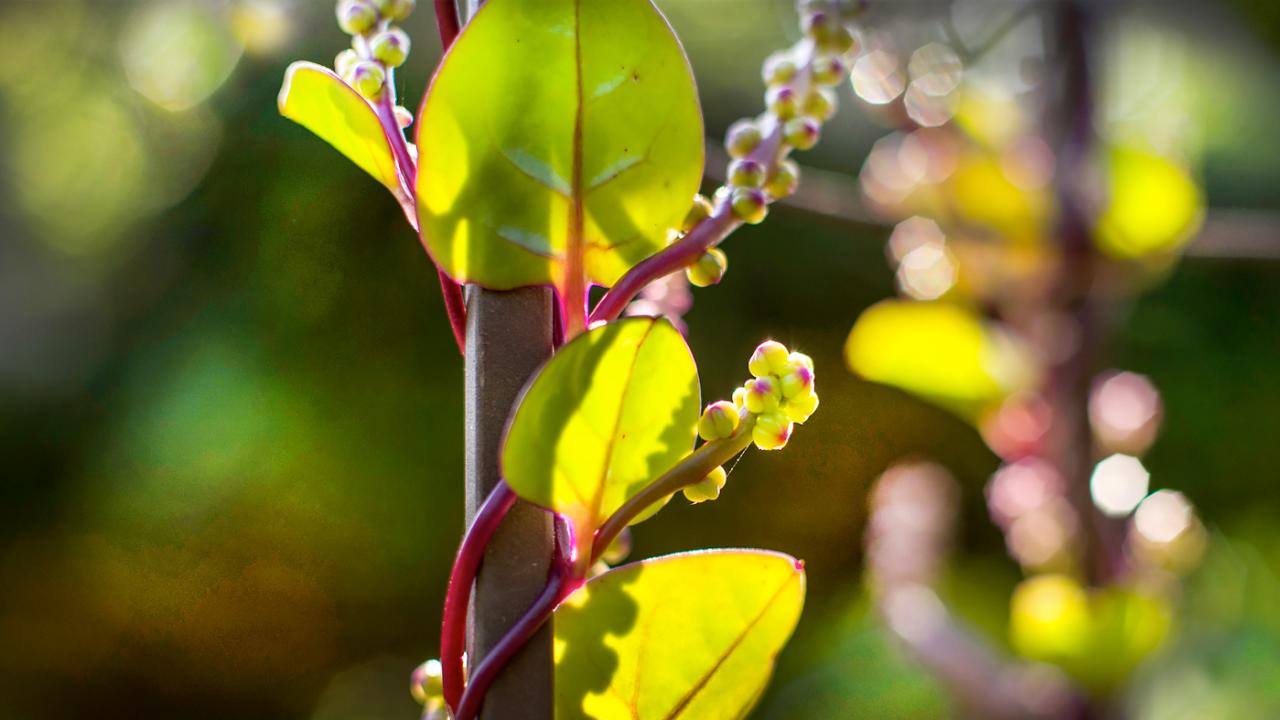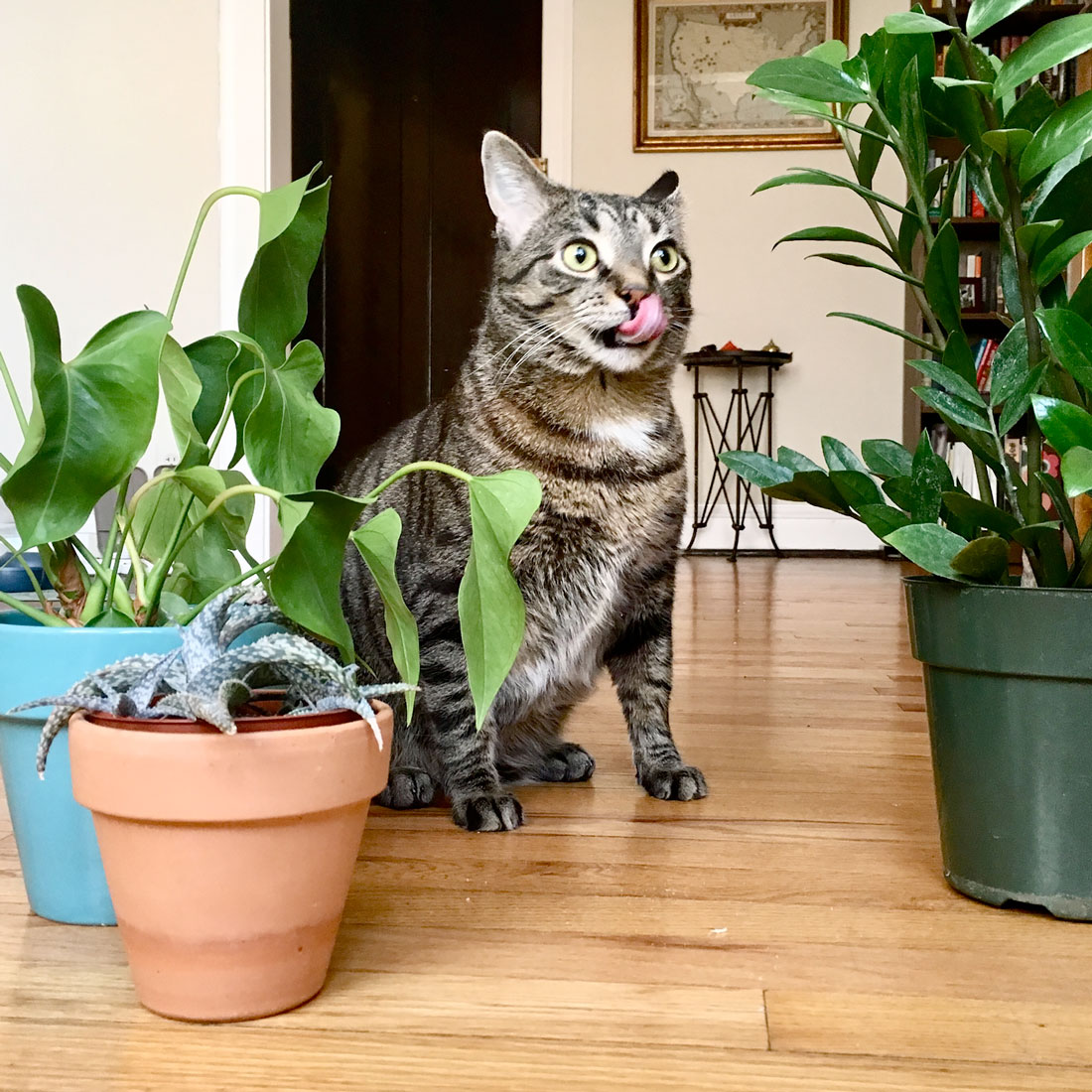

Plants & Gardening
Garden Stories
When Plant Babies Meet Fur Babies
We have a problem. My cat is eating my plant.
Despite the fact that my prayer plant has inhabited my apartment for over a year as part of my Plant Parenthood journey at the Chicago Botanic Garden, my cat’s small, albeit mischievous brain has only just now discovered that she can, in fact, eat it. The leaves turned all ratty and shriveled, and now the plant is dead.

Rita the plant-muncher, whom I love very much. (Don’t worry–she has not taste-tested any of the plants in this photo! The ZZ plant and flamingo flower are toxic to cats and normally sit safely out of her reach.)
Thankfully, prayer plants are not toxic to cats—otherwise, we’d be having a much bigger problem. My cat usually is completely disinterested in my plants. But my cat’s new habit got me thinking about houseplants and pets. Lots of people believe that once they have a pet, they can’t have plants (and vice versa). But the two can coexist peacefully, with a little adaptation on both sides.

Barley the dog peacefully lounging with his orchids.
I called floriculturist Deb Moore of the Garden’s Plant Production Department to get recommendations on how to keep a peaceful and pet- and plant-friendly home.
1. Choose non-toxic plants
If you want to have houseplants in your pet-friendly home, make sure the plants are non-toxic. Some of these may cause tummy discomfort if ingested, but they’re much safer than toxic plants. Here are several of the most common, pet-safe houseplants:
- Prayer plant
- African violet
- Succulents such as Echeveria, Haworthia, and Sempervivum
- Spider plant
- Moth orchids
- Ponytail palm
- Catnip
- Basil
- Christmas cactus
For a full list of toxic and non-toxic plants, visit aspca.org.
2. Place plants out of reach
An easy way to keep plants pet-free? Put them out of reach! Place plants on high shelves or, if your cat is a jumper, hang them from baskets. “Avoid, or place out of reach plants your pets may find attractive to chew on, too, such as plants with thick, fleshy, or crunchy leaves (Aloe and Hoya). Even when not poisonous, you may not like the result, whether it's loose stool or a plant that’s been destroyed,” said Moore.
3. Deter pets from plants
Cats and dogs hate the smell of citrus and vinegar. Some pet owners spray their plants with a water-based mixture. You can also prevent digging by putting decorative rocks on top of the soil. Also, make sure your pet is getting the love and playtime they need—they may be attacking your plants out of boredom or pleas for attention.
Of course, if your pet’s plant-eating habit gets out of control, you may want to talk to your veterinarian. Your pet’s behavior might be coming from a deeper issue. An expert evaluation will help you to be sure.
As for my cat, her prayer-plant fixation has stopped. I cleared my bedside table of plants, and she’s back to chewing on only kitty-approved food and, occasionally, me.

